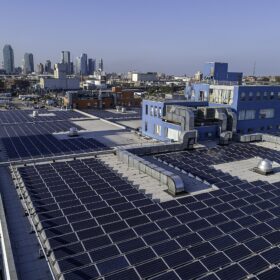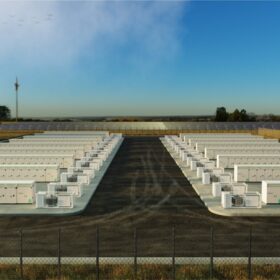Community solar is facing serious challenges. The impending end of solar tax credits and the potential end of the Solar For All program threaten to derail progress. Marketers are under the gun to cut costs, if they can survive at all. And after tax credits expire, the pressure to cut costs will be even greater.
As if that isn’t enough pressure, states are pushing community solar marketers to focus more on low-income households, to alleviate high energy bills.
While this can be seen as a burden, it should instead be seen as a lifeline. Marketers can tap the existing anti-poverty infrastructure — like Community Action Partnerships — to make customer acquisition cheaper and faster.
We have been working to prove the model in Minnesota, and think it can apply everywhere.
Trending low income
As of 2024, 24 states and localities had enacted legislation that enables community solar. Twenty of those have created provisions to address participation by low- and moderate-income (LMI) customers.
LMI solar policy is becoming more ambitious. California and New Jersey, for example, require over half of power from community solar projects to go to low-income residential subscribers. New Jersey recently added 3,000 MW to their program.
 Source: DOE
Source: DOE
State requirements for low-income participation were being reinforced by the national Solar For All grant program from the US Environmental Protection Agency, created under the Inflation Reduction Act (IRA). That program, involving $7 billion in grants to states, is aimed entirely at helping LMI households. Plus IRA created bonus tax credits for solar projects that serve LMI customers or communities.
The Trump Administration is trying to rescind money already spent on Solar For All, an issue for the courts to decide.
Customer acquisition
Marketers know that signing up low-income households for a product as new and abstract as community solar can be a challenge.
According to Kacie Peters, the late director of business development for Pivot Energy, community solar companies can pay between $500 to $1,200 for each customer acquisition. In a 2020 column, she blamed high costs on a door-to-door sales strategy that has to overcome low awareness of community solar, unfamiliarity with choice in electricity products, and a lack of trust.
This is even more of a problem for low-income customers, who can have tighter budget constraints and an ingrained distrust in marketers and institutions. Verifying their income can be an additional hurdle, as few people like to turn over their tax returns to a stranger.
The consultancy Wood MacKenzie agrees, finding that “acquiring LMI customers is nearly two times more expensive than acquiring non-LMI residential customers on a $/kW basis. And, they add, as more states require LMI participation “customer acquisition costs will also increase.”
Enter the CAPs
Community Action Partnerships — CAPs, also called community action agencies — are a prominent piece of America’s anti-poverty infrastructure. Located in almost every county in the US, CAPs were created during the Johnson Administration’s War On Poverty to deliver federal anti-poverty programs like Head Start and Meals on Wheels.
They often deliver energy assistance programs, like the Low Income Home Energy Assistance Program (LIHEAP) and the Weatherization Assistance Program (WAP).
While LIHEAP has had bipartisan support in Congress for over four decades, recently funded at over $4 billion per year, there is never enough to meet all the needs of eligible households. With the Trump administration firing the staff of LIHEAP and proposing to zero out its budget, its future is uncertain.
This is creating concern among CAPs about how to continue providing energy assistance. With pressure on both CAPs and solar marketers, now is the time to make some matches.
A better business model
Helping the poor is a good thing of course, but CAPs offer community solar marketers a competitive edge — a streamlined and lower cost method of customer acquisition.
Working with the Clean Energy States Alliance, we have been working to bring solar marketers together with CAP agencies in Minnesota.
Minnesota has the oldest community solar program in the country, which was revamped by legislation in 2023. So far 541 “solar gardens” have been built, totalling 910 megawatts, serving over 30,000 residential and 3,700 commercial and public sector customers. The new policy is pushing marketers toward residential customers, especially low-income households, requiring upwards of 6,000 new residential customers per year.
Meanwhile the state had over 130,000 households served by LIHEAP last year, enough to fill the subscription needs of solar gardens for years to come. This is true in every state. To make it easier, federal agencies have built a software tool to connect LIHEAP and community solar, currently being piloted in six states.
To prove the model, we brought together US Solar with Prairie Five and United CAP, both in West Central Minnesota, to enroll 100 households in a solar garden. The low-income households will save 20% on their bills, US Solar will save on customer acquisition costs, and the CAPs earn finder’s fees from US Solar for their effort. Future projects will be much larger.
We believe this model can be applied anywhere. CAPs are trusted by and engaged with their clients in a way solar marketers never will be. They have a large base of income-verified households they are eager to serve, and can enroll a steady stream of customers at a low cost, plus efficiently manage churn. In summary, CAPs can be a reliable and affordable customer acquisition partner.
By Bill Grant, National Community Action Partnership (NCAP) and Ben Paulos, Clean Energy States Alliance (CESA)
The views and opinions expressed in this article are the author’s own, and do not necessarily reflect those held by pv magazine.
This content is protected by copyright and may not be reused. If you want to cooperate with us and would like to reuse some of our content, please contact: editors@pv-magazine.com.








By submitting this form you agree to pv magazine using your data for the purposes of publishing your comment.
Your personal data will only be disclosed or otherwise transmitted to third parties for the purposes of spam filtering or if this is necessary for technical maintenance of the website. Any other transfer to third parties will not take place unless this is justified on the basis of applicable data protection regulations or if pv magazine is legally obliged to do so.
You may revoke this consent at any time with effect for the future, in which case your personal data will be deleted immediately. Otherwise, your data will be deleted if pv magazine has processed your request or the purpose of data storage is fulfilled.
Further information on data privacy can be found in our Data Protection Policy.